AP Stats Conditional Probability and Independent.
1/8
There's no tags or description
Looks like no tags are added yet.
Name | Mastery | Learn | Test | Matching | Spaced |
|---|
No study sessions yet.
9 Terms
Conditional Probability
When extra (given) info is presented that affects how much of the overall data is to be considered.
P( A | B )
This is to be read as,
“the probability of event A given event B has occurred.”
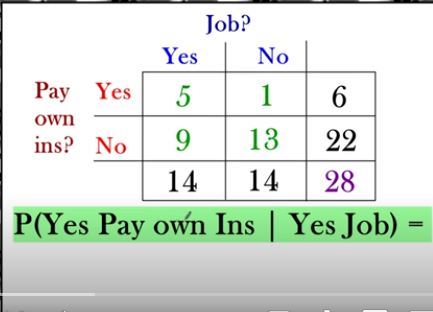
Example: Two Way table that presents amount of students that have a job and pay their own car insurance
P( Yes Pay own Car insurance | Yes Job )
P (Yes Pay own Car Ins / Yes Job ) = 5/14
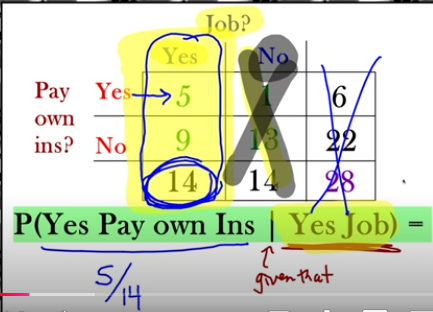

On the Pink formula:
P (A | B) = P(A ∩ B) → ∩ = and divided by P(B) = 5/28 divided by 14/28
= 5/14

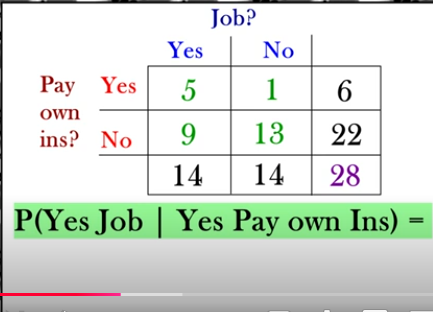
P( Yes Job | Yes Pay own Ins )
Find probability that yes they have a job, given that they pay for their own car insurance.
5/6!!! (only pay attention to the given row on the data table)
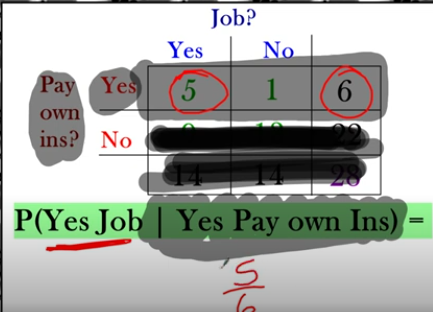
Does having a job affect the probability that a student will have to pay their own insurance?
P( Yes Pay own Ins_ = 5/28 = 21.4%
P(Yes Pay own Ins / Yes Job ) 5/14 = 35.6%
P(Yes Pay own Ins/ No Job ) = 1/14 = 7.1% (smaller value)
YES! If a student had a job, then they were more likely to pay for their own insurance
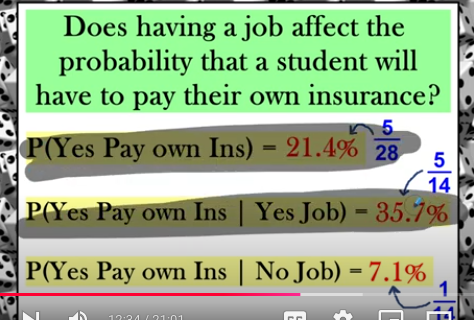
We can say that having a job and paying his/her own insurance are DEPENDENT EVENTS all because mathematically..
P(Yes Pay) =/ P(Yes Pay | Yes Job)
Values not equal to eachother
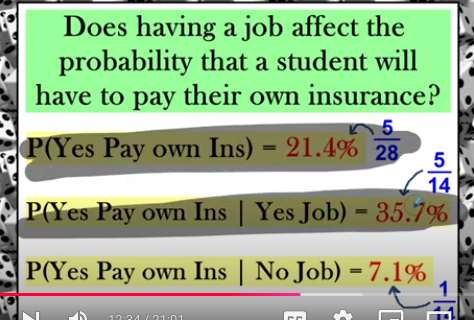

If your parent was a student althete, does that affect whether you would be a student athlete too?
P(Yes student Athlete) =
P(Yes Student | Yes Parent) =
P(Yes Student | No Parent)=
P(Yes student Athlete) = 24/36 = 0.66
P(Yes Student | Yes Parent) = 18/27 = 0.66
P(Yes Student | No Parent)= 6/9 = 0.66
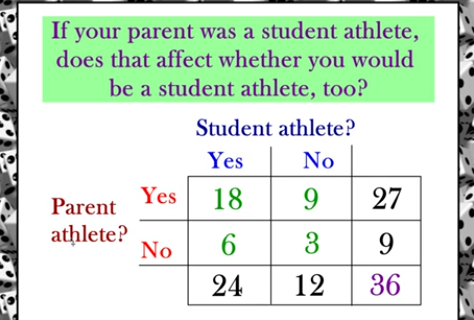
If your parent was a student athlete, does that affect whether you would be a student athlete, too?
NO!!! If the parent was an athlete or not did not affect the probability the student is an athlete
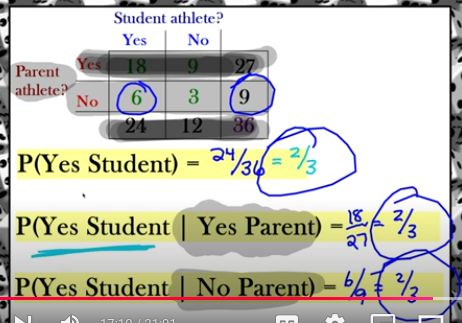
We can conclude your parents decision to be a student athlete and your decision to be a student athlete are INDEPENDENT EVENTS all because mathematically…
P(Yes Student Athlete) = P( Yes Student | Yes Parent )
Values are equal to each other
P(A | B) = P(A)